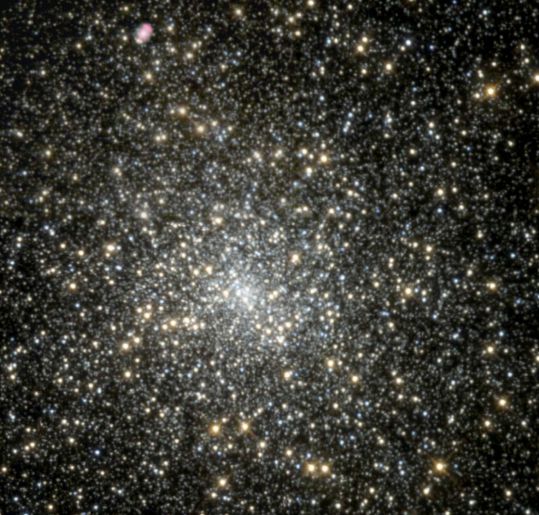
|
Explanation: Life might get dull at the core of M15 but the sky would always be bright with stars! In fact, only 40,000 light-years away in the constellation Pegasus, M15 is one of the most densely packed globular star clusters in our Milky Way Galaxy. This stunning Hubble Space Telescope image of M15 shows thousands of individual stars across the central 10 or so light-years of the cluster, also cataloged as NGC 7078. Yet even the Hubble's sharp vision can't clearly separate the stars at this cluster's core. Globular star clusters harbor from a hundred thousand up to a million stars and roam the Milky Way halo. Like most globulars, M15 is filled with ancient stars, about 12 billion years old compared to the Sun's estimated 4.5 billion years. Its cool red giant stars appear yellowish in this color composite image. Unlike most globulars, M15 displays a planetary nebula, the briefly visible gaseous shroud of a dying star. Can you pick it out? Cataloged as Kuestner 648, M15's planetary nebula is the round pinkish cloud at the upper left.
|
January February March April May June July August September October November December |
| ||||||||||||||||||||||||||||||||||||||||||||||||
NASA Web Site Statements, Warnings, and Disclaimers
NASA Official: Jay Norris. Specific rights apply.
A service of: LHEA at NASA / GSFC
& Michigan Tech. U.
Based on Astronomy Picture
Of the Day
Publications with keywords: star cluster - M 15 - M 1 - planetary nebula - MyCn18 - star - cluster - globular cluster
Publications with words: star cluster - M 15 - M 1 - planetary nebula - MyCn18 - star - cluster - globular cluster
See also:
- APOD: 2025 November 26 B Globular Cluster M15 Deep Field
- APOD: 2025 September 5 B 47 Tucanae: Globular Star Cluster
- APOD: 2025 August 31 B NGC 7027: The Pillow Planetary Nebula
- APOD: 2025 August 22 B A Tale of Two Nebulae
- APOD: 2025 August 14 B M13: The Great Globular Cluster in Hercules
- APOD: 2025 August 5 B NGC 6072: A Complex Planetary Nebula from Webb
- APOD: 2025 July 29 B A Helix Nebula Deep Field
